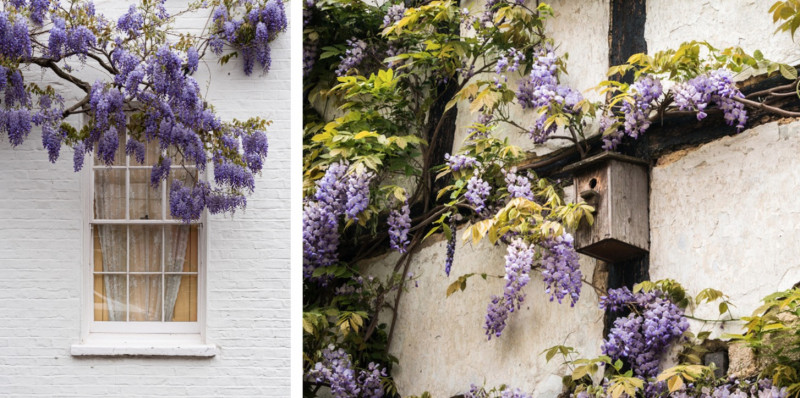Wisteria Planting & Care Guide
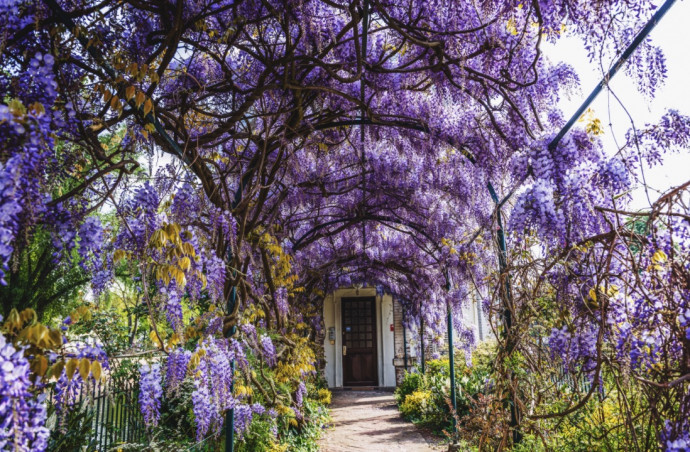
Perfect for a pergola – or even for a pot – wisteria may have lofty ambitions, but there are ways to tame all but the most vigorous of cultivars. With its pastel shades and delicious scent, wisteria is undoubtedly romantic. In late spring and early summer the sight of walls draped in the pendulous blooms of this vigorous, twining climber is pure poetry.
Wisterias are large, vigorous, deciduous climbers that flower in late spring to early summer, producing pendent racemes 18in (45cm) long or more, of scented, pealike flowers. These open in shades of white through pale lilac- blue to dark purple, and are sweetly scented. Often seen growing on arches and arbors, wisterias need strong support, as they become heavy with age, and their roots may damage building foundations. A closer look at the plant labels will reveal that many wisterias can reach huge proportions – a little off-putting if your plot is more modest than mammoth. Luckily, careful cultivar selection and judicious (and regular) pruning means you can still grow this lovely plant – as a small tree or even in a patio pot.
To get the best from wisteria, give it what it wants. First and foremost, that means sun, so you’ll need to choose the right spot. The ideal place for a wisteria is on a warm, south-facing wall – it can cope with some shade, but too much can (and probably will) affect flowering. They prefer fertile, moist, well-drained soil in full sun or partial shade. Unless the soil is very poor, don’t fertilize them, as this encourages excess growth.
Plant in well-drained, fertile soil in spring or autumn when the ground is warm. Give it plenty of water over summer, especially if it’s a new plant (remember that the buds for next year’s flowers are set in the hottest months).
If you already have a wisteria but it isn’t flowering, common reasons are too much shade, too little water, or pruning mistakes. It’s normal to wait three to four years for a new plant to flower, so don’t panic if your young wisteria proves a little shy in the early days.
Timely pruning
When it comes to pruning, there’s no mystery or magical formula – get the timing right and you shouldn’t have any problems. Wisteria should be cut back twice a year – once in July or August after it has flowered, and once in January or February. Although it’s tempting, don’t prune in early or mid-summer as this can adversely affect the flower buds. The aim of summer pruning is to stop the foliage getting out of control and to let the plant concentrate on developing those flower buds – simply cut new growth (in the form of long, trailing stems) back to around three or four leaves. The aim is to end up with around 4in of growth. Then, prune new growth again in late winter, back to three buds, cutting just above a bud. It’s also a good idea to prune out any suckers that spring up around the base as these can compete with the main plant.
If you’ve got your pruning right and your wisteria is getting plenty of sun, but there are still no flowers, check your soil condition. Poor soil can be lacking in potassium. Try feeding with fish, blood and bone in the spring; or add some sulfate of potash, which helps plants develop flowers and fruit.
Go for grafted
You’ll find the most common types of wisteria in garden centers – W. sinensis and W. floribunda, as well as some of their better-known varieties – but many more are available online. Wherever you source it from, be sure to buy a grafted variety as wisteria that has been grown from seed can take up to 20 years to flower! That’s too long for even the most patient of gardeners to wait. Look after your wisteria, and it will pay you back tenfold. Give this star plant sun, water and a regular haircut, and you’ll be rewarded year after year with a striking display.
5 wonderful wisteria to plant
1. W. floribunda ‘Multijuga’
The bicolored blooms – pale lilac with dark violet tips – are held in longer-than- normal trusses that reach up to 4ft. Fast-growing, it flowers in June, with blooms appearing at the same time as the foliage.
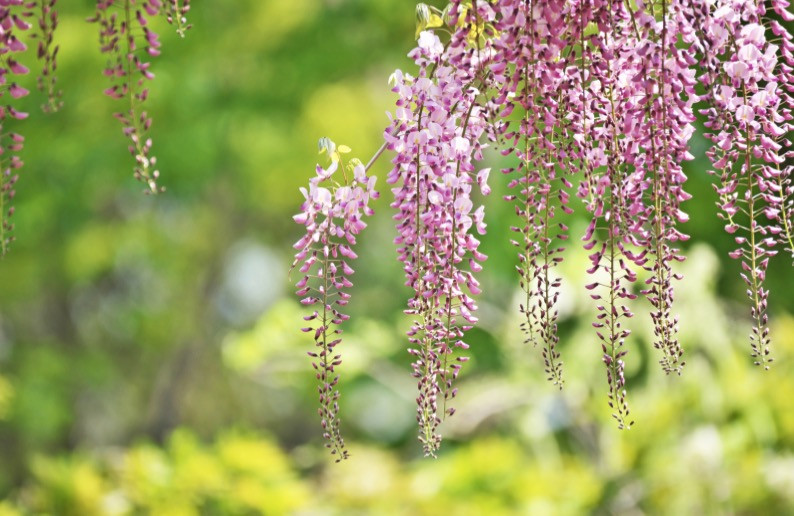
2. W. brachybotrys
Also known as silky wisteria, this cultivar twines anti-clockwise, and bears short racemes (around 6in) of large white flowers, which exude a strong fragrance. A good choice for a pot, it produces a steady supply of blooms from May to July.
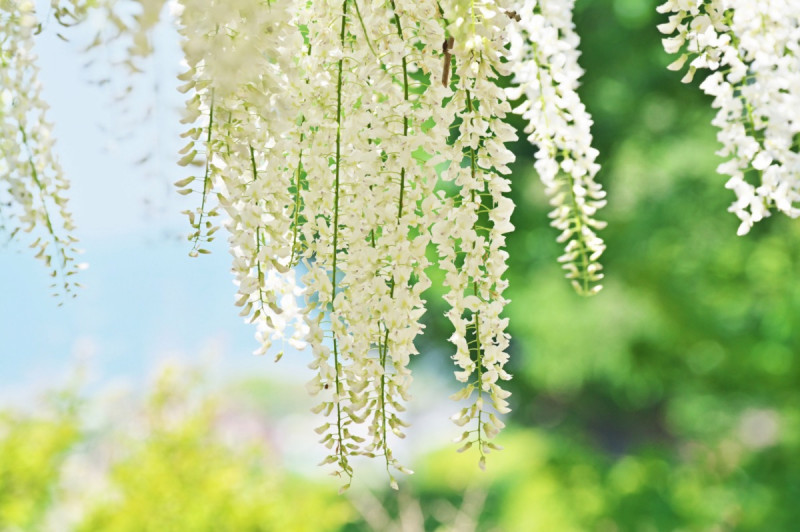
3. W. sinensis
One of the most popular wisterias for growing on a wall thanks to its flowers, which appear before the leaves, making them easier to see. Vibrant purple and with a strong, heady scent, they make a big impact in May and June.
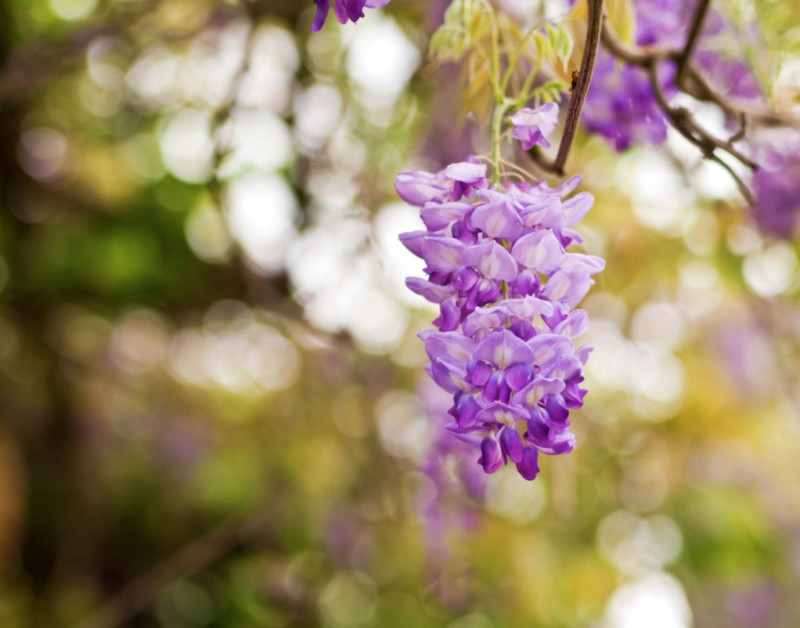
4. W. floribunda ‘Rosea’
This pink flowering Japanese wisteria blooms in early summer. A vigorous variety, it can grow to around 26ft, with trusses around 2ft long, each of them heavy with fragrant flowers. Ideal for a sunny pergola.
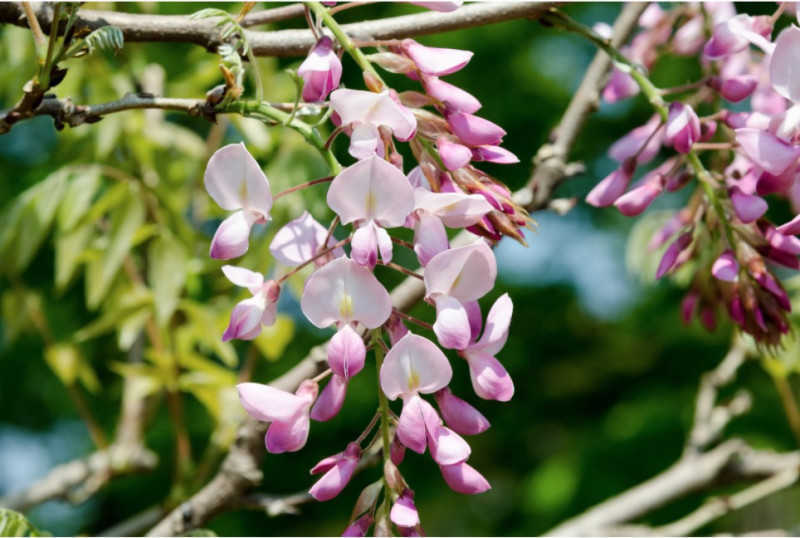
5. W. floribunda ‘Domino’
Popular for its reliability and the fact that it flowers from a young age, producing short racemes crammed with fragrant lilac blue blooms. Like all floribunda varieties, ‘Domino’ is a good choice for growing over garden structures such as arches and arbors.
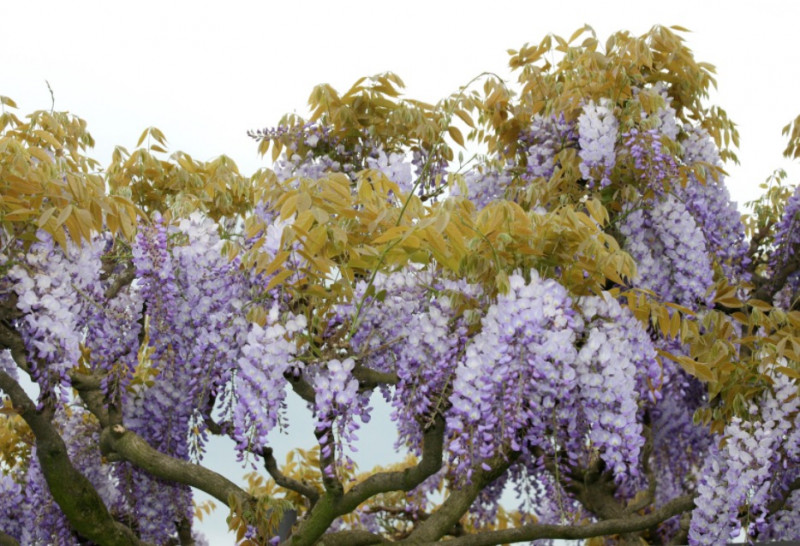
Planting advice
Dig some well-rotted manure or compost into your soil and plant the wisteria at the same level as it was in its original pot. If you’re planting a bare-root wisteria, do so with the graft line just above the soil. Firm in well and give it a good water. To grow wisteria against a wall, you’ll need horizontal wires, about 1ft apart to support the stems.
5 ways to grow Wisteria
1. In a container
Look for a compact (or ‘dwarf’) variety such as ‘Amethyst Falls’. Use a large container and fill with good potting compost. Plant at the same level as it was in its original pot, and ensure that the graft line is sited above the surface of the soil.
2. Against a wall
Train as an espalier, with the branches supported by horizontal wires, on a south-facing wall. Chinese varieties are well-suited – try W. Sinensis ‘Prolific’, which flowers from a young age.
3. With a clematis
Wisteria and clematis make a delightful combination – both love the sunshine, and if chosen with care your clematis will take up the flowering baton once the wisteria is over. Adequate support and careful pruning are vital.
4. As a tree
You can buy wisteria ready trained as a standard, but it’s fairly easy to do it yourself. Choose a single-stemmed wisteria such as W. Sinensis and, once it reaches about 5ft (11⁄2m), prune the growing tip in late winter to encourage side shoots.
5. Over a pergola
Wisteria is perfect for garden structures such as pergolas and arches, where the flower trusses dangle down and provide
a dramatic display. Choose a variety with long racemes, for example, one of the floribundas.
